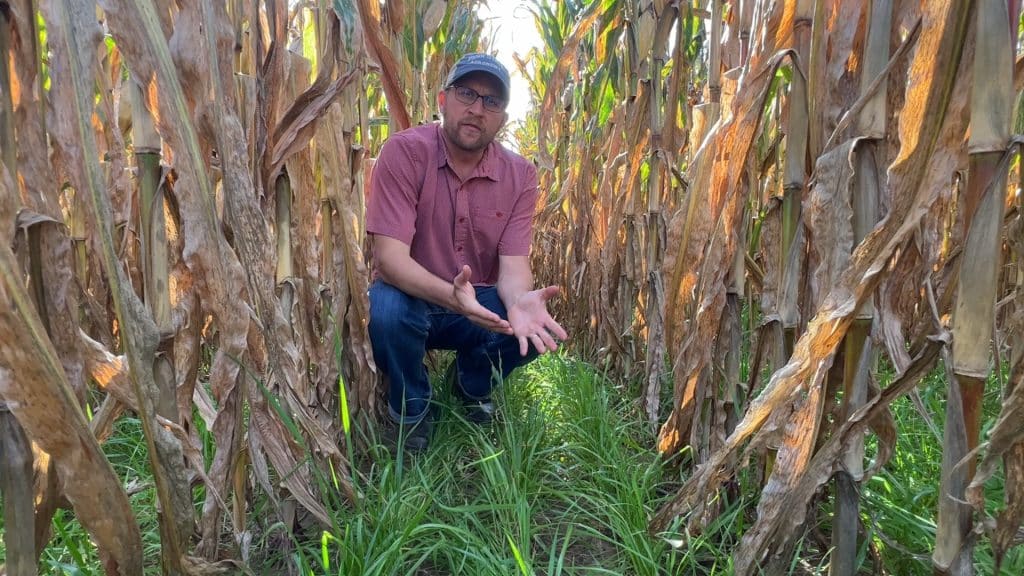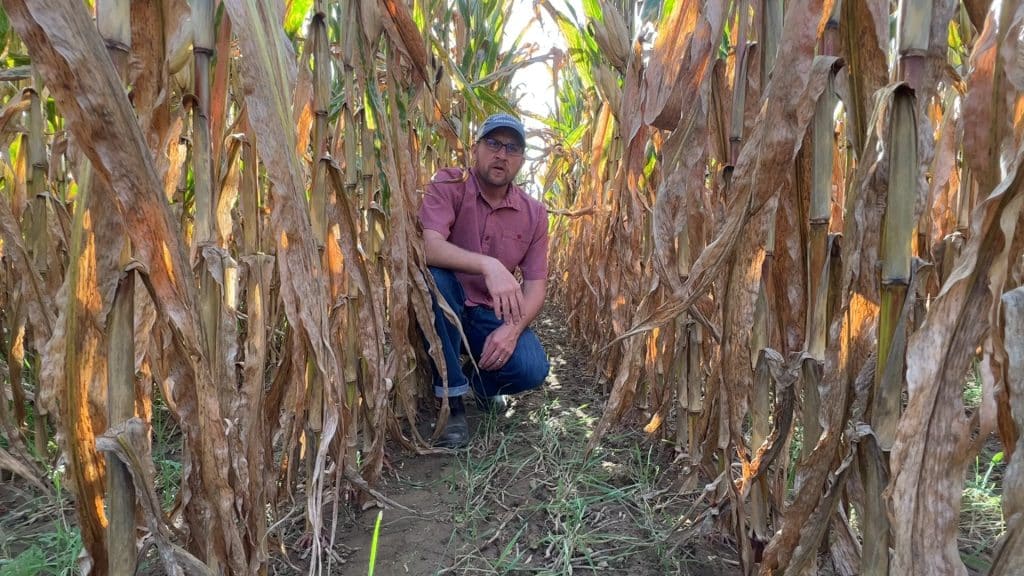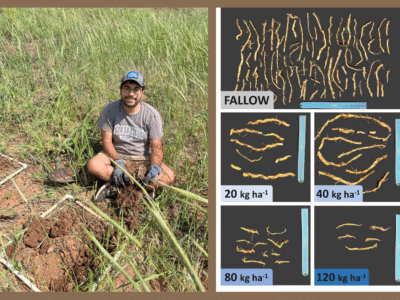Interseeding cover crops into standing corn can help growers avoid the hustle and delays of harvest season and give their covers more time to establish and grow.
But the practice comes with a learning curve and lots of questions. What growth stage is best? Should you drill or broadcast seed? What corn herbicides will allow for cover crop establishment? How can you give interseeded cover crops the sun and space they need to thrive?
With help from funding from the Sustainable Agriculture Research and Education (SARE), Penn State University Extension Weed Specialist Dr. John Wallace is leading research to help answer these questions and help farmers maximize weed suppression with cover crops.
GROW recently joined a PSU Cover Crop Interseeding Field Day led by Wallace and his team at the Penn State Agronomy Research Farm in Pennsylvania Furnace, PA, and got the latest on their findings.
How to Avoid Herbicide Injury


One of the most common pitfalls when interseeding cover crops is protecting the emerging plants from herbicides used earlier in the season to control weeds.
Wallace and his team have identified some of the safest combinations of herbicides to manage weeds but not hurt emerging cover crop stands. The key? Picking shorter-lived residual herbicides in your preemergence herbicide applications and avoiding residual products altogether in your postemergence applications.
See the group’s full findings on avoiding herbicide injury here:
Giving Cover Crops Enough Sun
Most research agrees that V4 to V5 is the best corn growth stage to interseed cover crops and get good emergence. But growing corn plants can cast a big shadow over developing cover crops. Wallace and his team are exploring a number of different crop management tactics that growers might pursue to let the cover crops and corn “share” the field more harmoniously.
For example, Penn State Weed Ecologist Dr. Carolyn Lowry is exploring how the orientation of a cornfield (north-to-south versus east-to-west) might affect sunlight availability for both interseeded cover crops and emerging weeds.
See more here:
Wallace’s team is also exploring the following factors’ effect on cover crop survival:
- Different corn hybrid genetics: Determinate (fixed ear) versus indeterminate (flex ear) corn hybrids
- Row spacing: 30 inch rows versus 60 inch rows or alternating them
- Different interseeding planting dates: V3 to V6
So far, they’ve found that in 30-inch corn rows, the corn genetic types had a limited effect on light availability for the cover crops later in the season. But determinate hybrids did yield better in the PA plots.
In the 60-inch corn rows, the cover crops did see more light infiltration later in the season (after V6), but corn yields were lower, more so with determinate hybrids (32% lower yields) than flex-ear hybrids (23% lower yields).
For now, narrow (30-inch) corn rows interseeded early (V3 to V4) with cover crops show the best weed suppression. Essentially, this system allows cover crops to outcompete the weeds, Wallace notes.
One final emerging issue Wallace has observed is that the longer growing season grants interseeded cover crops the chance to go to seed, especially annual ryegrass and forage radish growing in the wide row (60-inch) systems. “So, unless you’re going to come in there and graze that very quickly before you get a lot of seed rain, you may see some additional challenges with volunteers,” he cautions.
See the full details on this research on the effect of corn hybrid genetics and row spacing on interseeded cover crops here:
Drilling Versus Broadcasting
If equipment permits, Wallace’s team has found that drilling interseeded cover crops generally produces better establishment and biomass, but is more expensive than broadcasting methods, such as air seeders.
For more details on their research on drill interseeding cover crops, watch this presentation from Wallace.
Interested in more interseeding cover crop research? You can watch a PSU presentation from the field day on interseeding into soybeans, and a presentation about grazing livestock on interseeded cereal rye.
Videos and photos by Claudio Rubione, GROW; text by Emily Unglesbee, GROW.




























































































